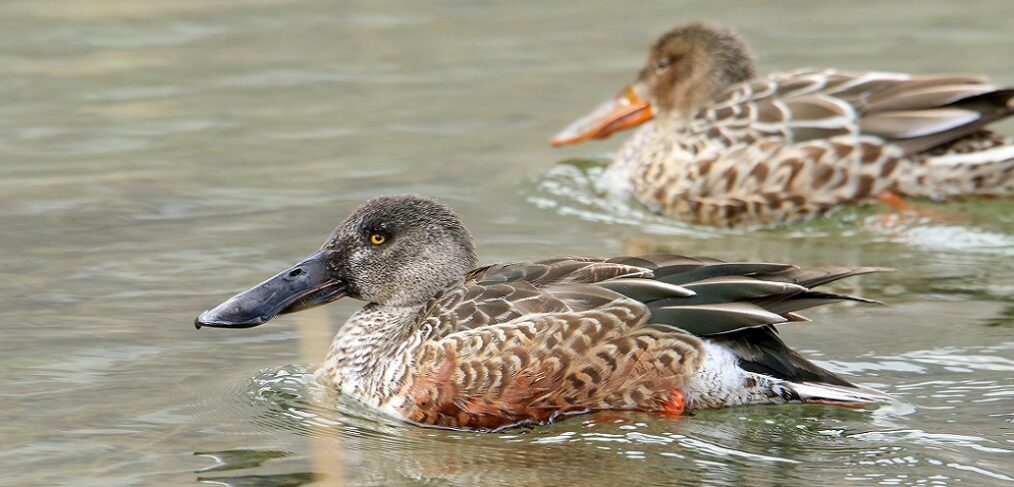
species of the week #99 – Northern Shoveler
One of the few animals that benefit from the ubiquitous over-fertilisation of water bodies is the Northern Shoveler. It finds more nutrient-rich plant remains in over-fertilised waters and therefore also breeds today in smaller lakes and ponds along the Rhine and Moselle. In southern Germany, however, it is still rather rare, whereas in the Netherlands, with its many small and large water bodies, it is much more common. The first documented breeding attempt in the Palatinate was in 1965 on the Neuhofener Altrhein. Breeding occurrences of the Northern Shoveler now occur almost every year in Rhineland-Palatinate, but only locally and in small numbers. Overall, the European population is stable.
| Distribution status in Rhineland-Palatinate | very rare |
| Remaining occurande | Rhine valley, Eifel, Netherlands |
| Last sighting in Rhineland-Palatinate | current |
| Habitat | Smaller inland waters and floodplains with dense banks |
| Threat | Loss of breeding habitats, hunting |
The Northern Shoveler, which specialises in floating plankton, feeds mainly on water fleas and other small crustaceans, aquatic insects, seeds and aquatic plants. Strong algal growth is a consequence of excessive nutrient input into water bodies. The large amount of nutrient-rich algae then makes for well-fed spoonbills.
The Northern Shoveler is diurnal and nocturnal and has developed a special technique to reach food: It performs a twisting movement and stirs up mud. It then filters the mud with its spoon-shaped beak like a sieve. Plankton, water fleas, insect larvae, tadpoles and spawn get caught in the flaps of the beak. Especially in autumn, the Northern Shoveler can often be seen making circles and serpentine lines on the water. Often the ducks search for food in groups, so they can stir up the mud even better.
The Northern Shoveler is a medium to long-distance migrant; it winters in Western Europe and tropical Africa. In March and April, Northern Shovelers migrate in great numbers through Central Europe and can then also be observed on reservoirs and other waters not suitable for breeding.
During the breeding season, the Northern Shovelers stays in nutrient-rich, shallow inland waters with cover-rich riparian vegetation and open, unweeded water surfaces. They can be observed both in alluvial forest waters and in smaller bodies of water. The Northern Shoveler builds its nest in dry places such as sour grass bulrushes, usually not far from the water surface in the siltation zone or on a bank rich in cover. Shovelers breed only once a year, from early to mid-May. The 8-12 young fledge after 7-8 weeks.
The main threat is the loss of breeding sites and hunting. Suitable breeding biotopes with distinctive vegetation-rich shallow water zones are lost due to drainage, filling, intensification of use and constructional interventions. In addition, Shoveler ducks are repeatedly (accidentally) killed while hunting mallards or die from ingesting lead ammunition.
Political necessity:
– Renaturation of water bodies and riparian areas
– Complete ban on lead ammunition
Click here for more exciting species of the week
Photo By Imran Shah from Islamabad, Pakistan – Northern Shoveler (Anas clypeata), CC BY-SA 2.0, https://commons.wikimedia.org/w/index.php?curid=110122980
